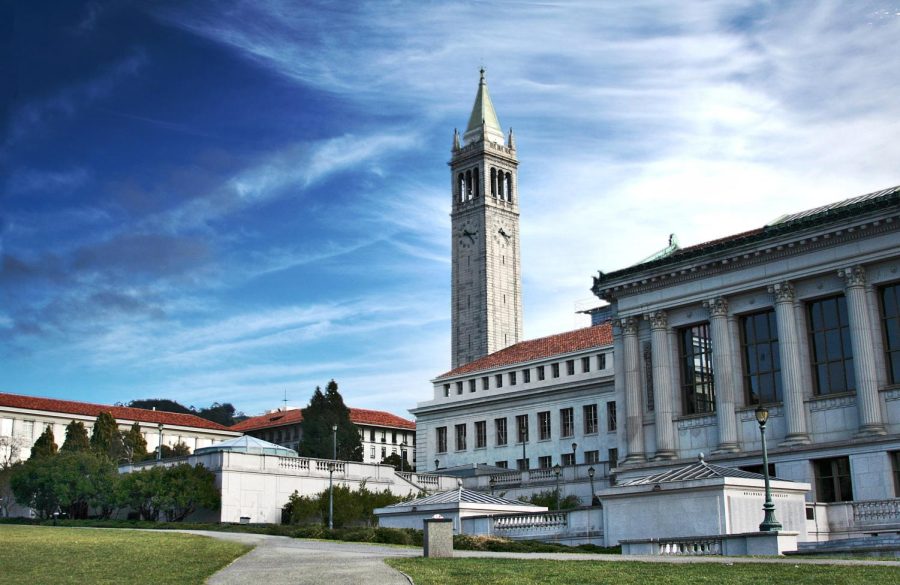The Better Solution for the Berkeley Enrollment Cuts
March 18, 2022
*The opinions expressed within the content are solely the author’s and do not reflect the opinions and beliefs of the website or its affiliates.*
A recent, since vetoed, California Supreme Court ruling upheld the decision first made back in August and denied the lift of the enrollment cap (limit on the total number of students permitted to enroll) for the University of California, Berkeley. This decision was in alignment with Alameda County Superior Court, siding with Berkeley neighborhoods regarding their concerns on Berkeley’s expansion plan, which caused housing prices to skyrocket and other environmental issues, invoking the California Environmental Quality Act. Though the decision taken by the court certainly is backed by legal evidence and proceedings, do the benefits outweigh the losses? The answer is no. The decision to halt admission offers denies the faultless student population access to higher education, reduces research budgets and loses out on the talents that could be used for mitigating the harms of the gentrification that is taking place in Berkeley.
One of the gravest effects of the ruling was that the admission offers are expected to decrease by nearly a third, a reduction of about 3,000 students in the incoming freshman class. This decision, rather than solving practical environmental issues surrounding the Berkeley neighborhoods, targets high school students who have not committed any wrongdoings. The students should not bear the consequences of the inconsiderate expansion plan enacted by the University of California. Students enrolling in fall 2022 and further years may fall victims to the restriction gap. Thousands of students who wish to pursue further education are now forced to involuntarily sign up for more competitive races, as few seats remain available at Berkeley. This could drive the costs of education up for low-income families and pose a threat to Governor Newsom’s call for equality in education.
Furthermore, the reduction in incoming first-year students would also hurt the school’s finances, as the loss of tuition seems inevitable. According to The Sacramento Bee, the losses are approximately around 57 million dollars. The loss in tuition fees would decrease Berkeley’s ability to provide high-quality education and research opportunities for faculties and students. Berkeley’s tuition accounts for 34% of their budget; therefore, any loss in tuition could undermine Berkeley’s school year budget plan. This could cause lower scholarship amounts and increase families’ burden on higher education. Berkeley is world-renowned for excellent research facilities and professors with a large surplus of budgets to conduct research freely. The sudden halt to tuition could fracture Berkeley’s research capabilities, leading to professors and students leaving the university to seek better opportunities elsewhere. This results in a loss in the quality of education that Berkley can provide.
In addition to a decrease in the quality of the education and research opportunities provided, the denial of almost one-third of incoming first-year students would cause a loss of talents that enter society every year. Higher education’s purpose, especially for a university like Berkeley, is to be the channel of knowledge to the community, the source of leadership and experiences that serve the country. With 3,000 fewer people graduating from Berkeley each year, the amount of skilled labor force and knowledge entering society would also impede creativity, leadership, and the ability to address societal challenges.
Environmental concerns and housing shortages are indeed essential and urgent issues facing the local community. Still, a clear-cut solution like the court ruling is not the solution to the problem. This is because the students seeking better education shall bear the consequences of irresponsible actions by the Berkeley campus. A possible solution can be Berkeley entering a legally binding contract promising increased student offers accompanied by a rise in housing supplies and developments. This would ease the pressure exerted on local communities while keeping access to higher education open to more. Moreover, Berkeley could extend its program in environmental science and urban development to proportionally support local communities by educating more students in becoming a source for local solutions. These programs can collaborate with local communities and real estate developers in urban planning and come up with feasible solutions to increase the housing supply.
In an update after Mar. 16, Governor Newsom and the lawmakers have passed and approved Senate Bill 118, which will offset the court order that has previously capped Berkeley enrollment for the 2021-22 school year. The bill gives California’s public colleges and universities 18 months to complete an environmental review before the court could cap the school population at a certain level. The measure taken by Governor Newsom made immediately after the court decision will allow Berkley to retain its enrollment level at the level of previous years.
In the midst of the pandemic and ever-growing global challenges around the world, the superior court’s ruling does not reflect the best interests and maximize the benefits against the losses. The action taken by the court harms the innocent student population, leading to a higher education cost. It also cuts research opportunities by reducing their budget, thus lowering the quality of education and fracturing Berkeley’s ability to deliver talents to society. Therefore, the decision of the Berkeley case ought to be reconsidered and find a better solution that accommodates both local environmental and housing issues while continuing to offer Berkeley’s high-quality education to a wide range of students. Fortunately, Gov. Newsom signed a law that halted the court decision, which is fantastic news for incoming high school seniors. However, the solution to the real problems still remains largely on finding and innovating ways to better mitigate the housing crisis with more sustainable urban planning.















Paul Skilbeck • Mar 24, 2022 at 2:04 am
Ain’t it a shame when liberal-thinking people who love their city, believe in ecologically sound neighborhoods, and have a sense of community, band together to fight the very university where they were educated and which they love? But this is what it’s come to.
It’s an even greater shame that young reporters, most of whom are more familiar with Kid Rock’s songs than Fats Domino, rush in to support Goliath in this unequal battle between the California state legislature and those Davids that would protect a community from a regime willing and ready to overturn the rule of law.
The journalists that purport to represent the interests of the students, fail to consider that many UC Berkeley students, exactly and only because of UC Berkeley’s out-of-control enrollment already cannot gain access to overfull lectures, cannot get the units they need to complete a degree course in four years, and pay horrifically high rent that results in crippling long-term debt. As an apartment building manager a few blocks from the UCB campus, I hear all of the above complaints a lot from students.
The enthusiastic young journalists covering the story seem to think a magic wand will be waved and 10,000, maybe even 20,000 beds for students will suddenly appear. Does anybody know how many skyscrapers that would require? And what of the social problems from living in those spartan, yet costly skyscraper? Such problems are well documented in cities like London, UK although the rents in London are much less than $3500/month for a 300 sq.ft space.
Oh, there’s this too. According to US Census data, UC Berkeley’s student population is already more than 50 percent of the resident population in Berkeley.
Fact of the matter is, while UC Berkeley continues to over-enroll compared to the world’s great publicly-funded universities such as Oxford in the UK which believe in quality over quantity, students will remain unable to access lectures, unable to finish their degrees in four years, and with enrollment continuing to far outpace construction, which it will do, rents in Berkeley will never come down.
All UC Berkeley and the state legislature are doing by continuing existing enrollment over-reach is putting money in the pockets of landlords and developers at the expense of students, while resting on the laurels of a bygone era.
They think building their way out of this crisis is a solution. It’s not, all that does is wreck the city without solving any of the original problems.
There is a better solution with positive environmental impact, expanded access to education, and stronger long-term rationale. UC Berkeley admin and Cal state legislature just aren’t smart enough to figure it out. Ain’t that a shame?